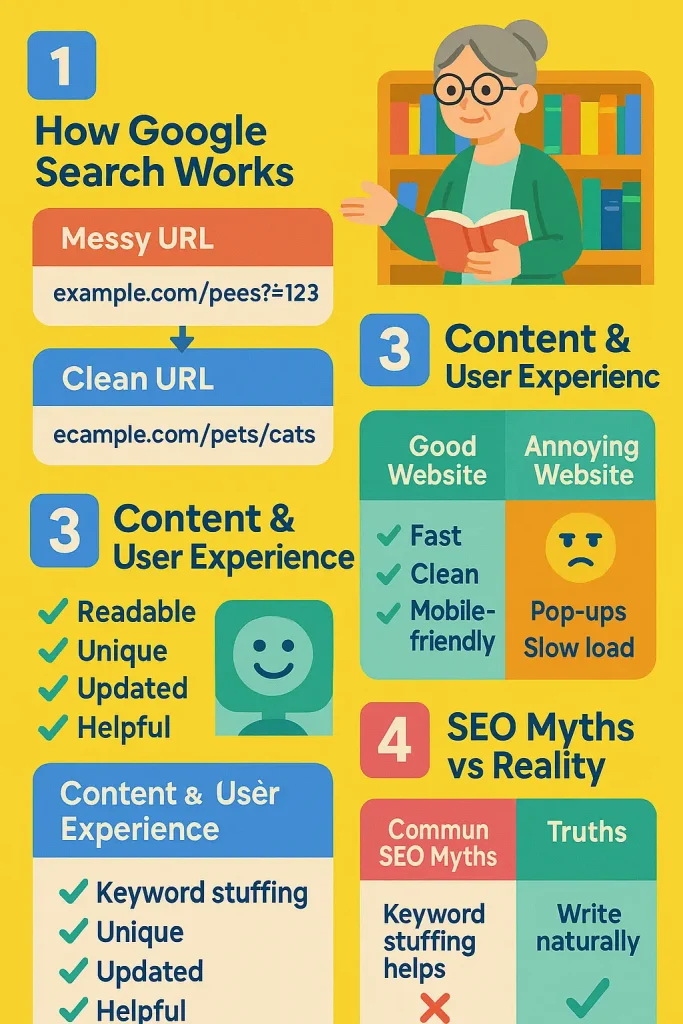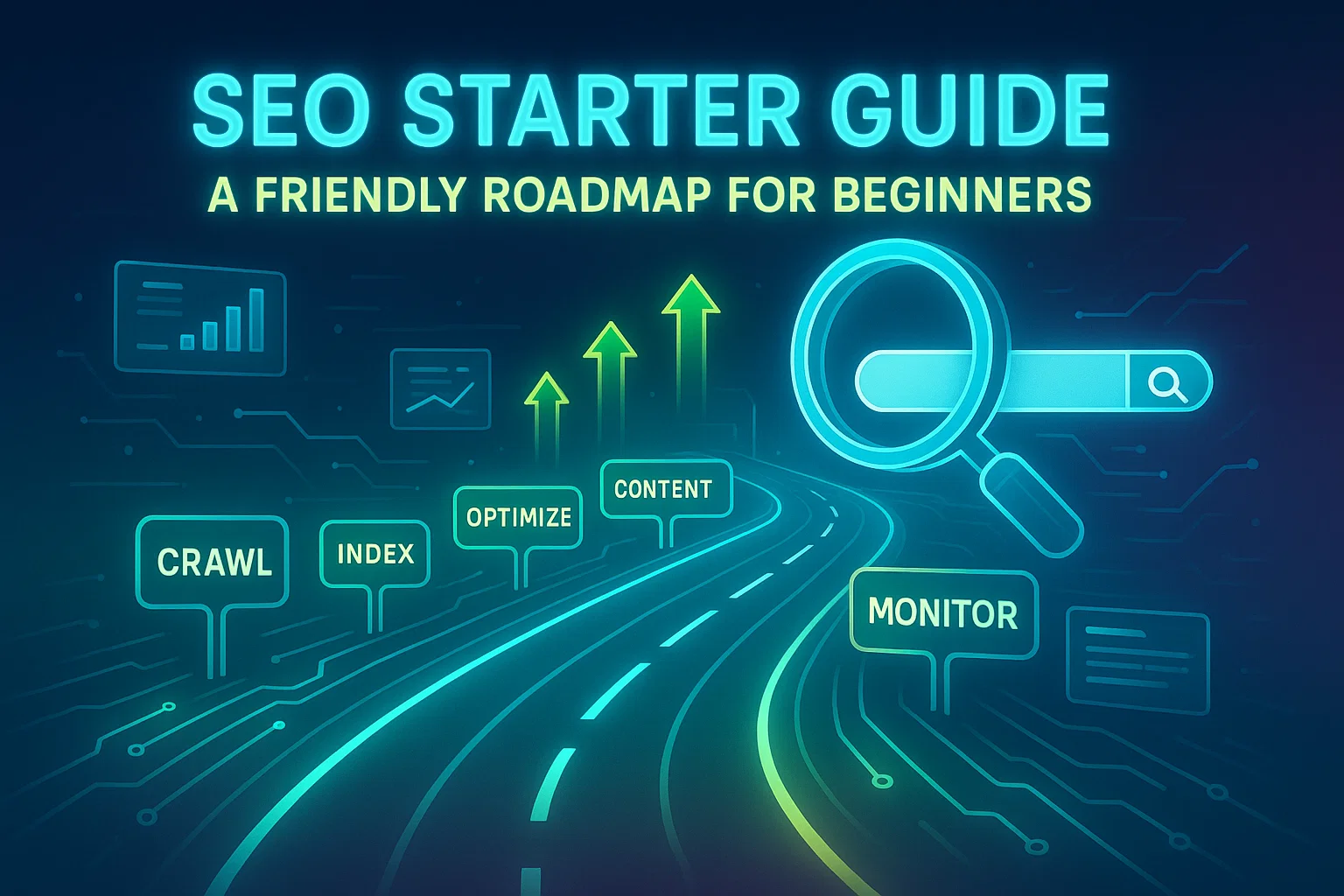SEO Starter Guide: A Friendly Roadmap for Business Owners
So, you’ve built a website. Maybe it’s your digital shop, a blog full of your best ideas, or a portfolio to land dream clients. You hit publish, take a proud sip of coffee… and then nothing. Crickets. Where are all the visitors you imagined?
Here’s the deal: just because you built it doesn’t mean they’ll come. That’s where **SEO—Search Engine Optimization—**comes in. Think of SEO as putting up giant neon signboards on the busy highway of the internet. It’s about helping search engines (like Google) find, understand, and share your site with people who are looking for exactly what you’ve got.
In this guide, we’ll walk you through the basics of SEO for business owners, step by step. Don’t worry—we’ll keep the jargon to a minimum and the humor just enough to keep you awake.
How Does Google Search Actually Work?
Imagine Google as the world’s nosiest librarian. It sends out little digital scouts called crawlers to read every page it can find. Then, it sorts these pages into its massive index (basically, the internet’s biggest library catalog). When someone searches for “best pizza near me” or “how to fix a squeaky door,” Google flips through this catalog in milliseconds and serves up what it thinks is most relevant.
The good news? You don’t need to submit a written request to Google to get noticed. Most sites are found automatically. But if you want your site to move up from the dusty back shelf to front-and-center, SEO is your ticket.
Help Google Find You
First things first—check if your site is even in Google’s index. Just type:
site:yourwebsite.com
into Google. If you see results, congrats—you’re in! If not, don’t panic. Make sure your site is accessible, has no major technical roadblocks, and consider submitting a sitemap (a simple file listing all your important pages). Most website platforms do this automatically, but a manual push never hurts.
Pro Tip: Other sites linking to you is like free publicity. Focus on creating content worth sharing, and let natural links do some of the heavy lifting.

Organize Your Site Like a Pro
Nobody enjoys a messy desk, and neither do search engines. A well-structured site helps both Google and your visitors.
- Use descriptive URLs: Instead of www.example.com/page1?id=123, go for www.example.com/pets/cats. It tells users (and Google) what the page is about.
- Group similar content: If you’ve got a lot of pages, put them in logical folders. For example, /policies/return-policy vs. /promotions/new-offers.
- Avoid duplicate content: If you’ve got two pages saying the exact same thing, combine them or redirect one. Duplicate content isn’t a crime, but it’s confusing—for both readers and search engines.
Content Is Still King
You’ve probably heard the phrase “content is king.” Well, it’s true—and queen, and maybe the entire royal court.
Good content is:
- Easy to read (no need for Shakespearean complexity).
- Unique (don’t just copy-paste from competitors).
- Updated (freshness matters—dust off old blogs once in a while).
- Helpful (always write with your reader in mind, not just search engines).
Think of what your audience might actually type into Google. A food enthusiast might search “charcuterie board ideas,” while a casual searcher types “cheese plate.” Anticipating these differences gives you a leg up.
On-Page SEO Basics
Here’s where small tweaks make a big difference:
- Title tags: These are the headlines you see on Google results. Keep them clear, concise, and unique to each page.
- Meta descriptions: The little blurbs under your title in search results. Make them catchy, accurate, and under 160 characters.
- Headings (H1, H2, etc.): Break your content into digestible chunks. Search engines love it, and so do readers.
- Images with alt text: Alt text is a short description that tells Google what’s in the image. It’s also crucial for accessibility.
- Internal links: Link to other pages on your own site—it helps Google understand your site structure and keeps visitors exploring.
Don’t Annoy Your Visitors
If your site is a circus of pop-ups, flashing ads, and auto-play videos, users will leave faster than you can say “bounce rate.” Google notices that.
Keep ads reasonable, make sure your site loads quickly (especially on mobile), and always design with user experience in mind. Happy visitors = better SEO.
Spread the Word
Even the best content needs a little push. Promote your site through:
- Social media posts
- Online communities
- Email newsletters
- Old-school methods (yes, business cards still work!)
The most powerful form of promotion? Word of mouth. If your content is genuinely useful, people will share it.
Beware of SEO Myths for any Business
Not everything you hear in SEO land is true. Let’s bust a few:
| Myth | Reality |
| Meta keywords matter | Nope. Google ignores them. |
| Keyword stuffing helps | It hurts. Write naturally. |
| Content must be 2,000 words+ | Quality > word count. |
| Exact domain names rank better | Not really. Focus on brand and content. |
| Duplicate content = penalty | Wrong. It’s inefficient, not punishable. |
Keep Learning & Monitoring
SEO isn’t a one-time job—it’s an ongoing process. Results take time (weeks, even months). That’s normal. The key is consistency.
Set up Google Search Console to monitor performance, track which keywords bring visitors, and spot issues early.
Final Thoughts
SEO isn’t magic. It’s not a secret sauce only “gurus” know. It’s about making your site easier to find, understand, and enjoy. Follow the basics—clear structure, quality content, friendly user experience—and you’re already ahead of most beginners.
Remember: SEO is a marathon, not a sprint. Keep tweaking, testing, and improving, and your site will thank you with more clicks, visitors, and (hopefully) conversions.
So, ready to trade the sound of digital crickets for a steady stream of traffic? Get started with these steps today—and watch your website climb the search ladder.




